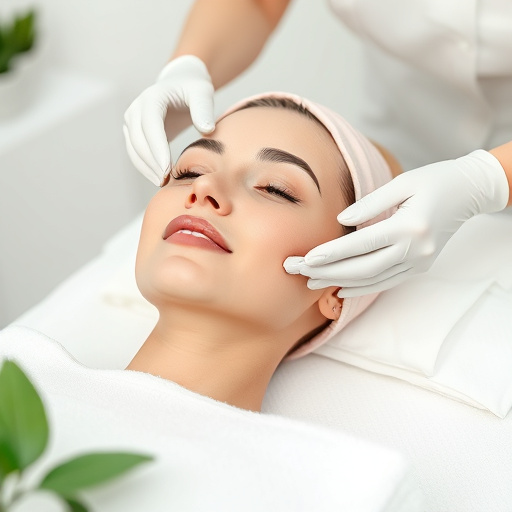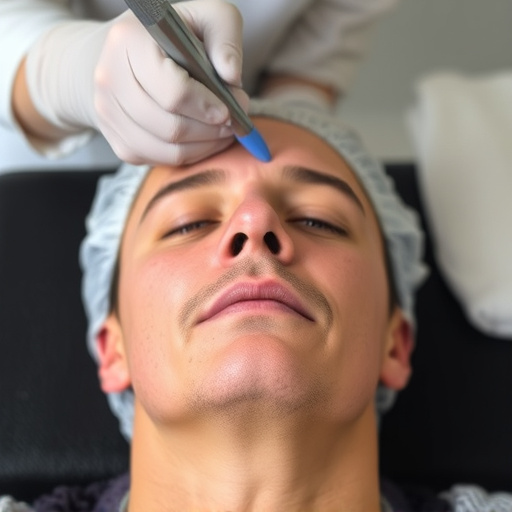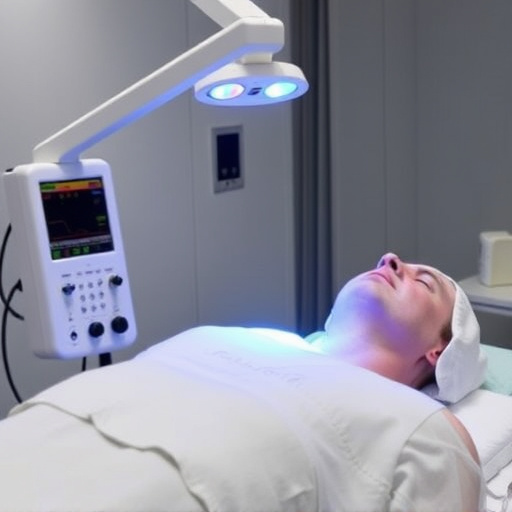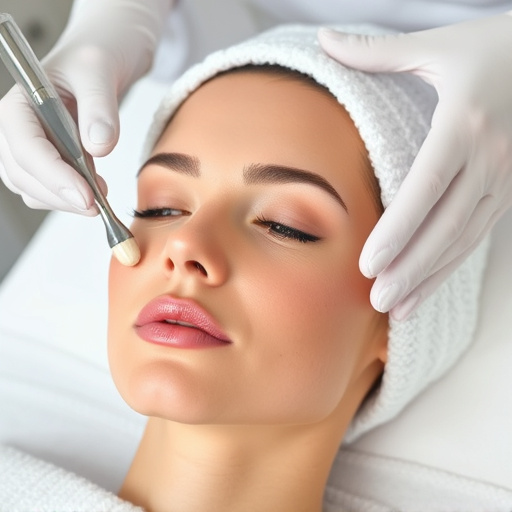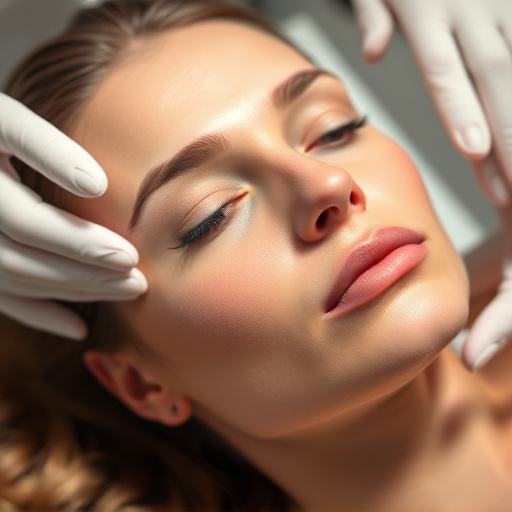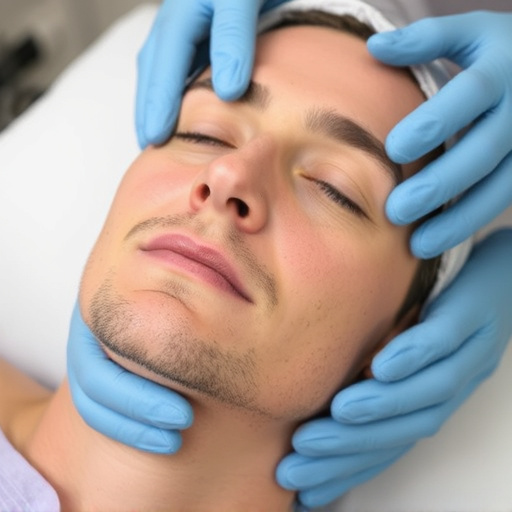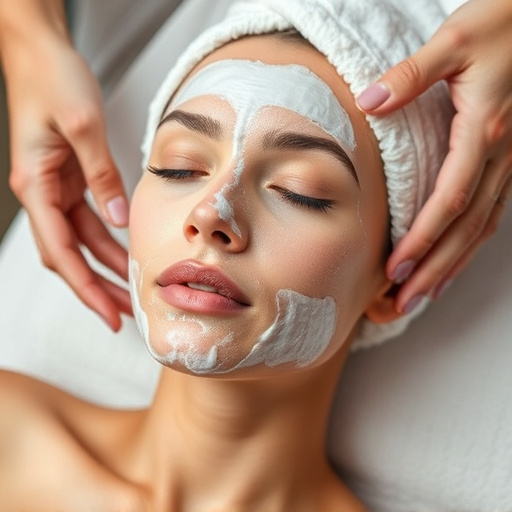Hyperpigmentation, caused by melanin overproduction, can be treated with exfoliating facials. These facials remove dead skin cells, promote rejuvenation, and reveal brighter, even-toned skin. There are two types: physical exfoliators for gentle removal and unclogging, and chemical peels for faster results in reducing fine lines and improving texture. Regular exfoliation enhances natural skin radiance and supports overall skincare health.
An exfoliating facial is more than just a skincare routine—it’s a potent tool in the fight against hyperpigmentation. This common skin concern, characterized by discolored patches, often arises from sun exposure or skin injuries. But regular exfoliation can transform your complexion. By removing dead skin cells and stimulating cell turnover, exfoliators even out skin tone and fade dark spots. This article delves into the science behind hyperpigmentation, explores different exfoliation methods, and highlights their individual benefits for achieving a radiant, evenly-toned complexion through your daily facial routine.
- Understanding Hyperpigmentation and Its Causes
- The Role of Exfoliation in Treating Hyperpigmentation
- Types of Exfoliators and Their Benefits for Skin
Understanding Hyperpigmentation and Its Causes
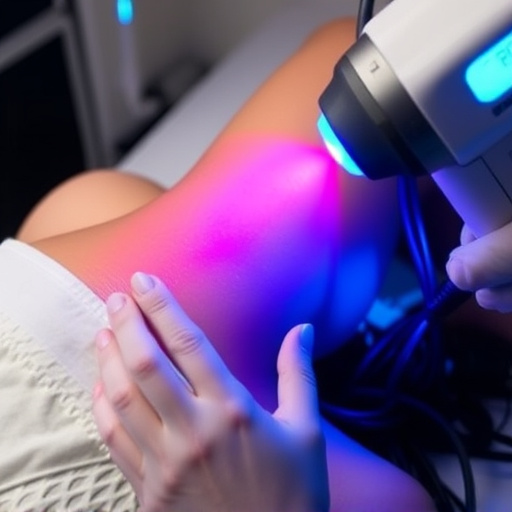
Hyperpigmentation is a common skin concern that many people face, characterized by dark patches or spots appearing on various parts of the face or body. It occurs when melanin, the pigment responsible for skin color, becomes overproduced in certain areas, leading to an uneven complexion. Understanding the causes behind hyperpigmentation is essential when addressing this issue effectively.
Several factors contribute to its development. Sun exposure is a significant trigger, as UV rays can damage the skin and stimulate melanin production. Ageing, hormonal fluctuations, and certain medical conditions like melasma or post-inflammatory hyperpigmentation are also common causes. Even certain skincare products or injuries can lead to hyperpigmented areas. An exfoliating facial treatment can be a game-changer in managing these issues, as it helps remove dead skin cells and promotes skin rejuvenation, making it an effective step towards achieving a more even tone.
The Role of Exfoliation in Treating Hyperpigmentation
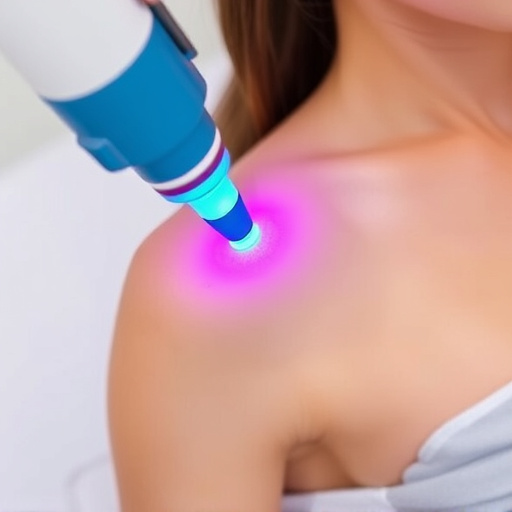
Exfoliating facials play a pivotal role in addressing hyperpigmentation concerns. By removing the upper layer of dead skin cells, these treatments reveal brighter and more even-toned skin beneath. This process is crucial as hyperpigmentation often arises due to an overproduction of melanin, which finds its way into the skin’s surface cells, leading to dark spots or patches. Regular exfoliation helps prevent this by maintaining a healthy turnover rate of skin cells, ensuring that damaged or discolored cells are replaced with new ones.
Moreover, exfoliating facials can enhance the effectiveness of other anti-aging treatments like those aimed at wrinkle reduction and skin tightening. By smoothing out the texture of the skin, these facial procedures allow for better absorption of active ingredients in creams and serums, promoting overall skin health and a more youthful appearance.
Types of Exfoliators and Their Benefits for Skin
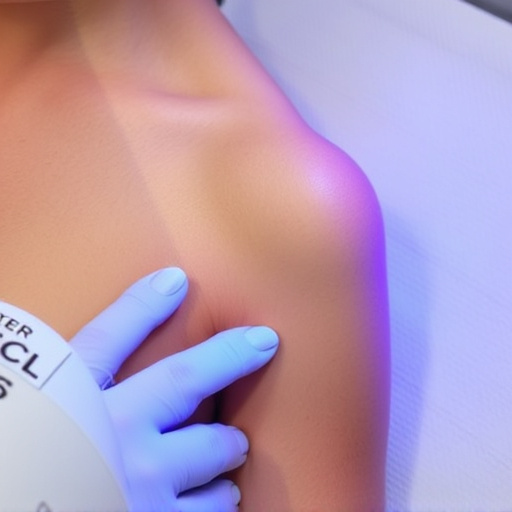
Exfoliating facials are a popular skincare treatment for addressing various skin concerns, including hyperpigmentation. But what exactly are exfoliators and how do they benefit the skin? There are two main types: physical and chemical exfoliants. Physical exfoliators, such as scrubbers, contain tiny particles that gently slough off dead skin cells and unclog pores. These can help refine pore texture and promote a brighter, smoother complexion. Chemical peels, on the other hand, use acidic solutions to dissolve away the upper layers of the skin, reducing the appearance of fine lines and improving overall skin tone and texture. This type of exfoliation is particularly effective for deep skin brightening and even toning.
Both approaches have their advantages. Physical exfoliators are safe for sensitive skin types as they don’t involve harsh chemicals. They’re also great for removing dry, dead skin cells that can exacerbate hyperpigmentation. Chemical peels, while more intense, offer faster results in terms of skin refinement and brightening. Regular exfoliation, whether through a facial or at-home products, helps to maintain a healthy skin barrier, ensuring the skin’s natural radiance shines through.
An exfoliating facial is a powerful tool in the fight against hyperpigmentation, offering a gentle yet effective approach to revealing a more even skin tone. By removing dead skin cells and stimulating cellular renewal, regular exfoliation helps to fade dark spots and unevenness, providing a brighter and more radiant complexion. Incorporating an exfoliating facial into your skincare routine can be a game-changer in achieving healthy, glowing skin.
